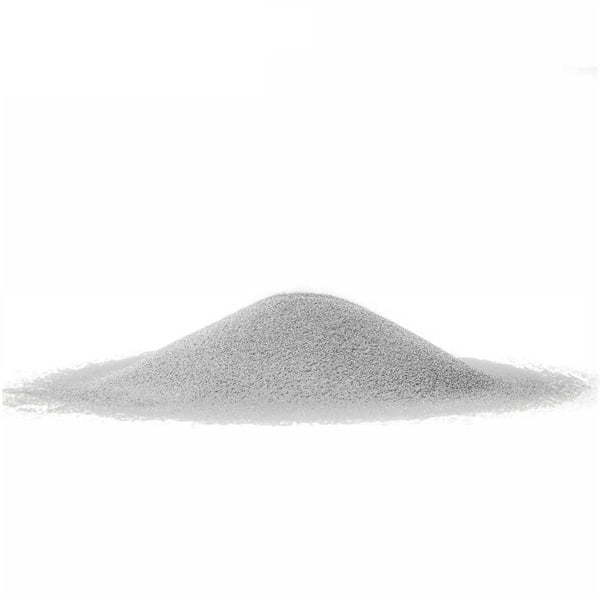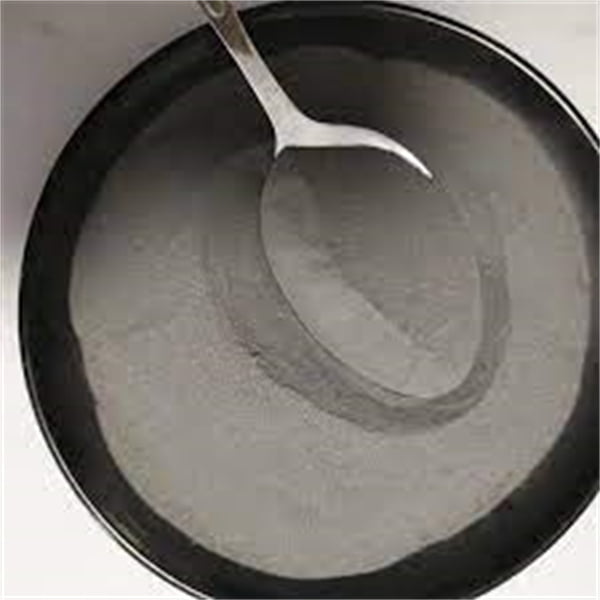Het isostatisk pressning (HIP)
Innehållsförteckning
Imagine a world where metal components are practically flawless, free from tiny air pockets and imperfections that can weaken them. This isn’t science fiction; it’s the reality of Hot Isostatic Pressing (HIP), a powerful technique that takes metal parts to the next level.
In this comprehensive guide, we’ll delve into the fascinating world of HIP, exploring its purpose, applications, advantages, and even some limitations. Buckle up and get ready to discover how heat and pressure join forces to create superior materials!
The Purpose of Hot Isostatic Pressing (HIP)
Have you ever squeezed a stress ball? That’s kind of like HIP, but on a much more intense level. HIP subjects components to extreme heat (up to 2,000°C) och uniform, high-pressure gas (up to 45,000 psi) within a specialized pressure vessel. Think of it as a supercharged pressure cooker for metals and ceramics.
This potent combination serves two primary purposes:
- Eliminating porosity: Imagine metal as a sponge. Tiny air pockets, called porosity, can be trapped inside during manufacturing processes. These pockets weaken the material, making it more susceptible to cracks and fatigue. HIP acts like a sponge-squeezer, collapsing these air pockets and creating a denser, more robust component.
- Bonding Powdered Metals: Ever heard of 3D printing with metal? HIP plays a crucial role in this technology. Metal powders are used to create intricate shapes, but these shapes can be weak due to the loose nature of the powder. HIP fuses these particles together, resulting in a solid, high-performance metal part.

The Applications of Hot Isostatic Pressing (HIP)
HIP isn’t a one-trick pony. Its ability to create super-dense, high-integrity materials makes it a valuable tool across various industries:
- Aerospace: Aircraft components, like turbine blades and landing gear, need to be incredibly strong and lightweight. HIP ensures these parts can withstand the immense stress of flight without compromising safety.
- Medicintekniska produkter: Artificial hip joints and other implants require exceptional biocompatibility and durability. HIP creates parts that are less prone to wear and tear, leading to longer implant lifespans.
- Olja och gas: Deep-sea drilling equipment faces harsh conditions. HIP strengthens these components, preventing catastrophic failures under immense pressure.
- Fordon: High-performance car parts, like racing wheels and engine blocks, benefit from HIP’s ability to create lightweight yet incredibly strong components.
- Försvar: Military applications, such as weapon systems and armor, demand exceptional strength and reliability. HIP ensures these components can perform flawlessly under extreme conditions.
These are just a few examples. From dental implants to jet engine parts, HIP plays a vital role in creating high-performance materials for demanding applications.
The Advantages of Hot Isostatic Pressing (HIP)
So, why choose HIP over traditional manufacturing methods? Here are some compelling reasons:
- Överlägsna mekaniska egenskaper: By eliminating porosity, HIP creates parts with enhanced strength, fatigue resistance, and ductility. This translates to components that can handle greater loads and last longer.
- Improved Microstructure: The intense pressure during HIP refines the grain structure of the material, leading to a more uniform and predictable microstructure. This, in turn, enhances the material’s overall performance.
- Enhanced Leak Tightness: HIP creates near-perfect seals within components, making them virtually leak-proof. This is crucial for applications where even a minor leak can have catastrophic consequences.
- Mångsidighet: HIP can work with various materials, including metals, ceramics, and composites. This makes it a valuable tool for a wide range of industries.
Beyond these benefits, HIP also offers some practical advantages:
- Komplexa geometrier: HIP can be used with complex shapes that may be difficult to achieve with traditional manufacturing methods.
- Net-Shape Processing: In some cases, HIP allows for the creation of near-finished parts, reducing the need for extensive post-processing.
Think of HIP as an investment in quality and performance. The upfront costs may be higher, but the long-term benefits in terms of durability and reliability can be significant.
Disadvantages of Hot Isostatic Pressing (HIP)
While HIP offers impressive advantages, it’s not without limitations:
- Kostnad: The complex equipment and high energy consumption involved in HIP make it a relatively expensive process compared to some traditional methods.
- Begränsningar i storlek: The size and pressure limitations of HIP vessels restrict the size of components that can be treated.
- Materialkompatibilitet: Not all materials respond well to the intense heat and pressure of HIP. Some materials may experience unwanted changes in their properties.
- Processens komplexitet: HIP requires careful selection of processing parameters (temperature, pressure, and time) for each material and application. Improper settings can lead to defects or even damage the component.
- Long Cycle Times: The HIP process can take hours or even days to complete, depending on the size and material of the component. This can be a disadvantage for high-volume production.
It’s important to weigh the advantages and disadvantages of HIP carefully to determine if it’s the right solution for your specific needs.
Material Considerations for Hot Isostatic Pressing (HIP)
Not all materials are created equal, and their suitability for HIP can vary. Here’s a breakdown of some key factors to consider:
- Smältpunkt: The material’s melting point needs to be significantly higher than the processing temperature used in HIP to avoid unwanted melting or degradation.
- Duktilitet: Ductile materials, those that can deform under stress without breaking, are generally well-suited for HIP. The high pressure can help these materials flow and fill any voids present.
- Thermal Expansion: Materials with high thermal expansion coefficients may experience warping or distortion during the heating and cooling cycles of HIP. Careful control of processing parameters is crucial for such materials.
- Kemisk reaktivitet: Some materials may react with the pressurizing gas (usually argon) used in HIP. This can lead to unwanted surface reactions or internal defects.
Material selection for HIP is a critical step. Consulting with a qualified HIP service provider can help ensure the chosen material is compatible with the process and will achieve the desired results.

Jämförelse av HIP with Other Manufacturing Techniques
How does HIP stack up against other manufacturing techniques? Here’s a quick comparison:
- Casting: Casting is a traditional method for forming metal shapes. However, castings can be prone to porosity. HIP can be used as a post-processing step to improve the density and mechanical properties of castings.
- Forging: Forging involves shaping metal through hammering or pressing. While forging can create dense parts, it may not be suitable for complex geometries. HIP can be used in conjunction with forging to further enhance the properties of forged components.
- Svetsning: Welding joins separate pieces of metal together. However, the weld zone can have different properties compared to the base metal. HIP can help improve the integrity and uniformity of welds.
- Pulvermetallurgi: Powder metallurgy involves shaping metal objects from compressed metal powders. HIP is often used as a final step in powder metallurgy to create fully dense parts with superior properties.
Each manufacturing technique has its strengths and weaknesses. HIP can be a valuable tool to complement and enhance other methods, resulting in high-performance components.
How HIP is Used in Different Industries
Let’s delve deeper into some specific examples showcasing the power of HIP across various industries:
- Aerospace: Turbine blades in jet engines operate under extreme temperatures and pressures. HIP ensures these blades are exceptionally strong and resistant to fatigue cracks, improving engine performance and safety.
- Medicintekniska produkter: Artificial hip joints and knee replacements require exceptional wear resistance and biocompatibility. HIP creates near-flawless implants that last longer and reduce the risk of complications.
- Olja och gas: Downhole drilling tools used in oil and gas exploration face immense pressure and harsh environments. HIP strengthens these tools, preventing failures that can be costly and environmentally damaging.
- Fordon: High-performance car components, like connecting rods and lightweight wheels, benefit from HIP’s ability to create strong yet lightweight parts. This translates to improved fuel efficiency and overall vehicle performance.
- Försvar: Military applications, such as armor plating and weapon systems, demand exceptional strength and reliability. HIP ensures these components can withstand the rigors of combat without compromising functionality.
These are just a few examples, but they highlight the versatility of HIP and its role in creating superior materials for demanding applications across various industries.
Here’s a table summarizing the key benefits of HIP in different industries:
| Industri | Benefits of HIP |
|---|---|
| Flyg- och rymdindustrin | Enhanced strength and fatigue resistance for turbine blades and other critical components |
| Medicintekniska produkter | Improved wear resistance and biocompatibility for implants |
| Olja & Gas | Increased strength and reliability for downhole drilling tools |
| Fordon | Lightweight yet strong components for improved performance and fuel efficiency |
| Försvar | Exceptional strength and reliability for armor plating and weapon systems |
We’ll continue exploring the world of Hot Isostatic Pressing (HIP) in the next section, including frequently asked questions and additional resources.

VANLIGA FRÅGOR
Here are some of the most common questions regarding Hot Isostatic Pressing (HIP):
Q: What materials can be HIPped?
A: A wide range of materials can be HIPped, including:
- Metals (steel, titanium, aluminum, alloys)
- Ceramics (silicon nitride, alumina)
- Composites (metal matrix composites, ceramic matrix composites)
The suitability of a material for HIP depends on factors like melting point, ductility, thermal expansion, and chemical reactivity. Consulting with a qualified HIP service provider is recommended to determine if a specific material is compatible with the process.
Q: What are the typical sizes of components that can be HIPped?
A: The size limitations of HIP vessels restrict the maximum size of components that can be treated. The specific size limitations will vary depending on the HIP service provider, but typical ranges are:
- Diameter: Up to several meters
- Length: Up to several meters
For components exceeding these limitations, alternative manufacturing methods or segmentation of the component into smaller parts for individual HIP treatment might be necessary.
Q: How much does HIP cost?
A: The cost of HIP can vary depending on several factors, including:
- Size and complexity of the component
- Material being processed
- Processing parameters (temperature, pressure, time)
- Volume of parts being processed
Generally, HIP is a more expensive process compared to some traditional manufacturing methods due to the complex equipment and high energy consumption involved. However, the long-term benefits in terms of improved performance and reliability can outweigh the initial cost for critical applications.
Q: What are the advantages of using a HIP service provider versus in-house HIP equipment?
A: Here are some advantages of using a HIP service provider:
- Expertis: HIP service providers have extensive experience and expertise in optimizing the process for different materials and applications.
- Equipment Availability: Investing in and maintaining in-house HIP equipment can be expensive. Utilizing a service provider allows access to advanced equipment without the upfront investment.
- Kvalitetskontroll: HIP service providers have established quality control procedures to ensure consistent and reliable results.
- Skalbarhet: Service providers can accommodate a wider range of component sizes and volumes compared to in-house capabilities.
However, using in-house HIP equipment might be preferable for situations requiring high production volumes, tight control over the process, or proprietary applications.
Dela på
MET3DP Technology Co, LTD är en ledande leverantör av lösningar för additiv tillverkning med huvudkontor i Qingdao, Kina. Vårt företag är specialiserat på 3D-utskriftsutrustning och högpresterande metallpulver för industriella tillämpningar.
Förfrågan för att få bästa pris och anpassad lösning för ditt företag!
Relaterade artiklar

Högpresterande segment för munstycksvingar: Revolutionerande turbineffektivitet med 3D-utskrift i metall
Läs mer "Om Met3DP
Senaste uppdateringen
Vår produkt
KONTAKTA OSS
Har du några frågor? Skicka oss meddelande nu! Vi kommer att betjäna din begäran med ett helt team efter att ha fått ditt meddelande.

Metallpulver för 3D-printing och additiv tillverkning
FÖRETAG
PRODUKT
cONTACT INFO
- Qingdao City, Shandong, Kina
- [email protected]
- [email protected]
- +86 19116340731
















